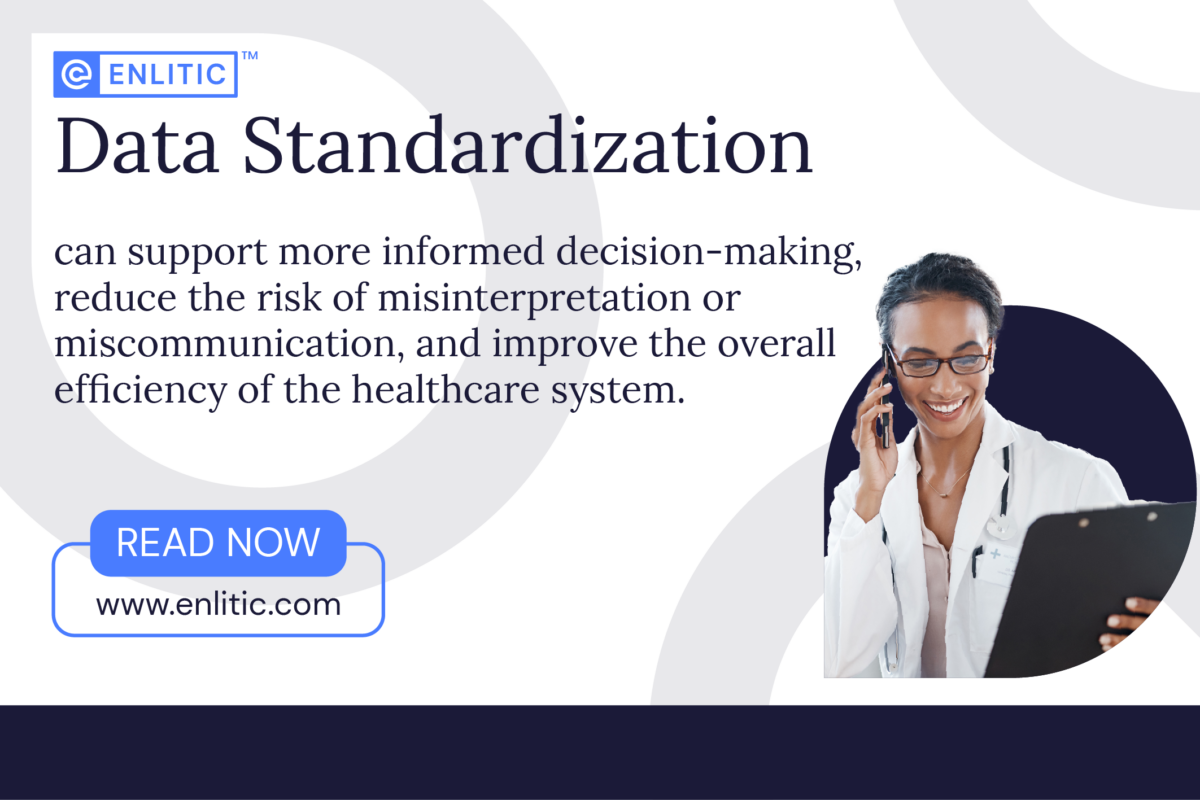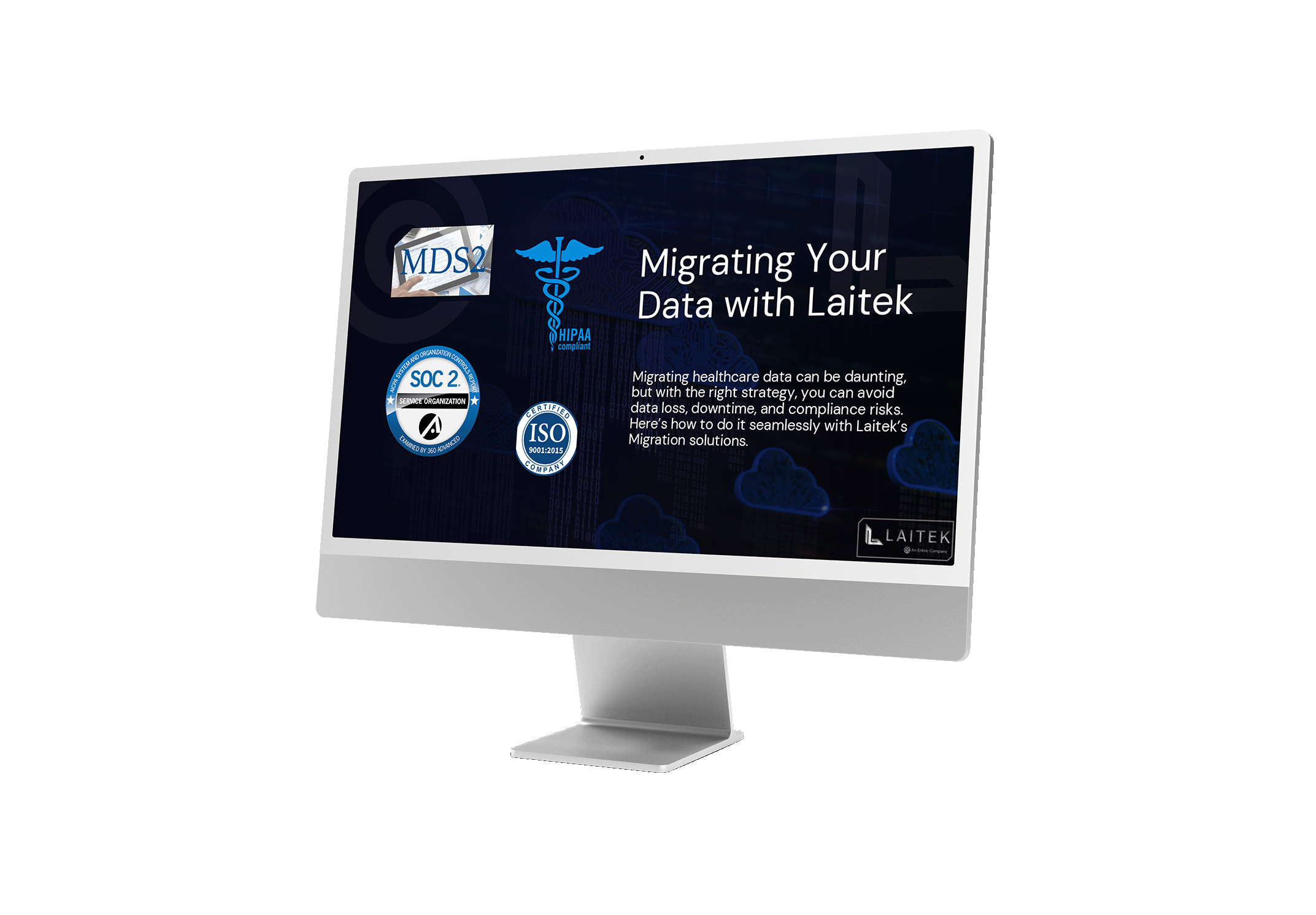We talk a lot at Enlitic about data standardization and data governance. But what does it really mean? There are many standards in healthcare today, and yet, still, the industry falls short on what’s really needed to achieve true interoperability in a healthcare organization. This is especially true when we talk about that in the context of medical imaging. There has yet to be standardized medical image descriptions across all modalities automatically with CV and NLP.
There are several standards in use today in healthcare that cover areas such as terminology, content, transport and privacy and security standards. The Integrating the Healthcare Enterprise (IHE) profiles take interoperability further and describe workflow models of the various processes that occur. But there are still shortcomings in the lack of a data governance structure at a more granular level. By standardizing the study and series descriptions of medical images, a facility can gain several benefits that will affect the delivery of patient care and the associated costs.
Improved workflow orchestration:
Without standardization, the management of medical images and information can be complex and time-consuming, with varying levels of accuracy. Standardized descriptions provide PACS administrators with a uniform and thorough understanding of the images and information, making it easier to manage the storage, retrieval, and distribution of the images and information and make routing rules and display protocols more reliable due to the consistent use of the same terminology.
Improved workflow and efficiencies:
Standardized descriptions simplify image display and reduce the amount of manual intervention required by the radiologist by providing clear and consistent information about the type of image, the patient, the imaging equipment used, and any relevant clinical information. Standardization helps to streamline the interpretation and reporting process, reducing the time and effort required to interpret and process the images.
Improved accuracy and consistency:
Medical images play a crucial role in the diagnosis and treatment of various medical conditions. However, images alone may not provide enough information for accurate interpretation. The lack of standardization in the description of medical images can lead to inconsistencies in interpretation, which can result in incorrect diagnoses, unnecessary tests, and inappropriate treatments. Clear and consistent information about the type of image helps to ensure that the image is properly understood by all members of the healthcare team, reducing the risk of misreading.
Improved interoperability:
Standardized studies can help to ensure that images are easily and accurately transferred between healthcare providers, improving interoperability, and easing the exchange of information. Without standardization, images may be described in different ways, making it difficult to share information. This can result in delays in patient care, increased costs, and decreased quality of care. Standardized descriptions ensure that images can be shared between providers. support the integration of images into electronic health records (EHRs), making it easier for healthcare providers to access and share images and other medical information.
Better decision-making:
Without standardization, descriptions of imaging studies can vary greatly, making it difficult for healthcare providers to understand the information contained in the images and make informed decisions. This can result in misinterpretation, miscommunication, and incorrect diagnoses, leading to inappropriate treatments and increased costs. Standardization of studies can help to improve the continuity of care, reduce duplicative tests, and support informed decision-making.
Better research:
Medical images have a wealth of information about a patient’s health and disease, making them a valuable resource for research. However, without standardization, the descriptions of these images can vary greatly, making it difficult to compare and interpret the information contained in the images. This can lead to unreliable and inaccurate research results, making it difficult to develop new treatments and improve patient outcomes. Standardized descriptions provide a dependable and complete understanding of the images, making it easier to compare and interpret. Sharing across institutions and researchers, supports larger, more comprehensive research studies, leading to the development of new treatments and a deeper understanding of disease and health.
Improved billing and revenue capture:
Standardized medical image descriptions can improve billing and coding by supplying a consistent and comprehensive understanding of the images and services provided, reducing the risk of coding errors, and improving the accuracy of reimbursement. Billing and coding are critical components of the healthcare system, affecting the financial viability of healthcare providers and the accuracy of reimbursement. Without standardization, billing and coding can be complex, time-consuming, and prone to errors. Standardization makes it easier to code and bill for the services provided.
Increase the value for data monetization:
In healthcare, there is growing interest in monetizing medical data, including medical images, to support research, innovation, and improved patient outcomes. However, the value of the data is limited by its quality, accessibility, and usefulness. Standardizing medical image descriptions improves the quality and usefulness of the data. In addition, standardization can help to improve the interoperability of the data, making it easier to share and compare across institutions and healthcare providers, thus making it more valuable.
Enrich a real-world evidence database:
Real-world evidence (RWE) databases play a crucial role in providing evidence to support clinical decision-making and research. Standardizing medical images can help to improve the quality, consistency, and accuracy of the data in an RWE database. This makes the data more valuable to researchers, healthcare providers, and other stakeholders.
Conclusion:
Standardized medical image descriptions in healthcare is crucial for improving the quality, accuracy, and efficiency of care delivery. By using standardized formats and terminology, medical images and information can be more easily and accurately shared, interpreted, and managed. This can support more informed decision-making, reduce the risk of misinterpretation or miscommunication, and improve the overall efficiency of the healthcare system.








